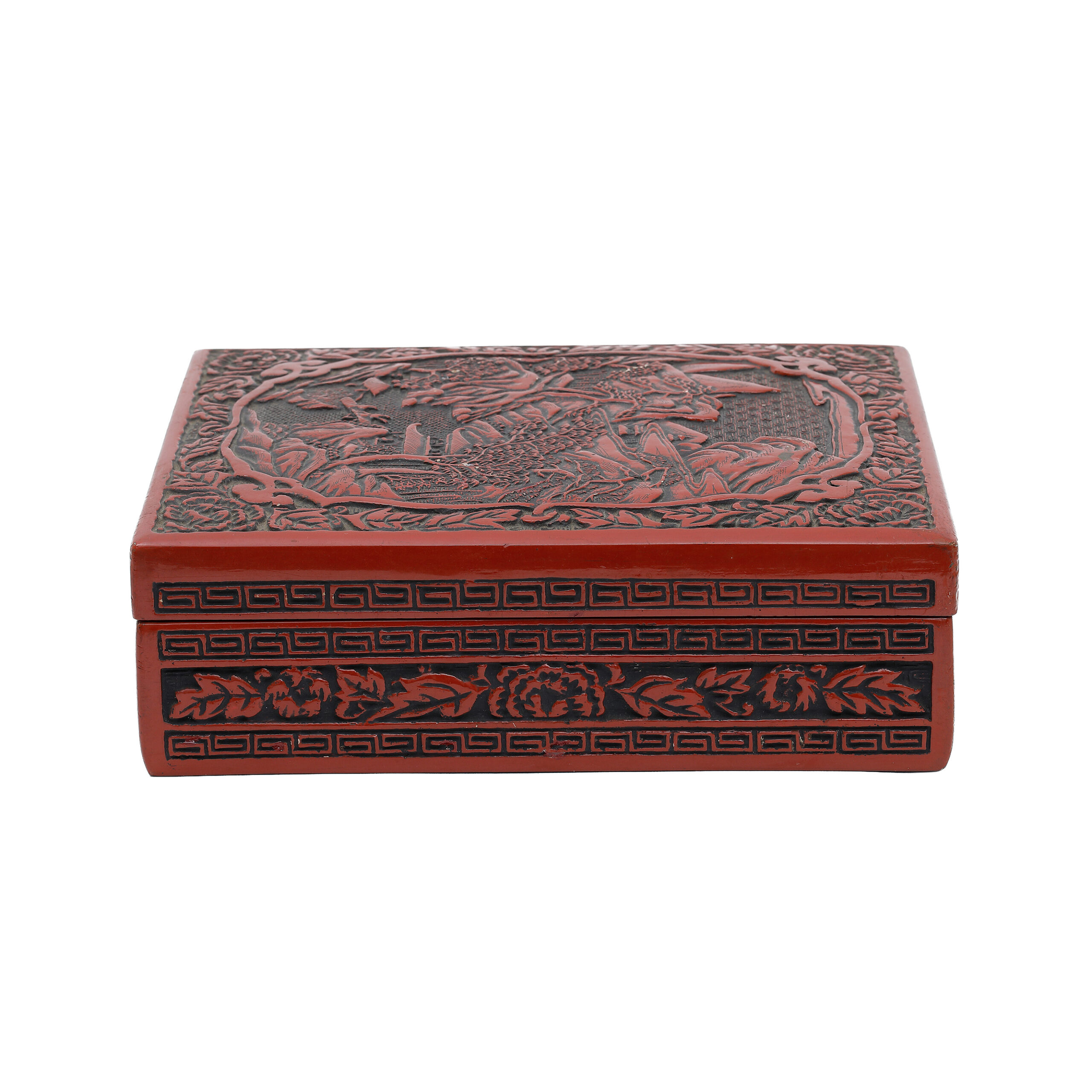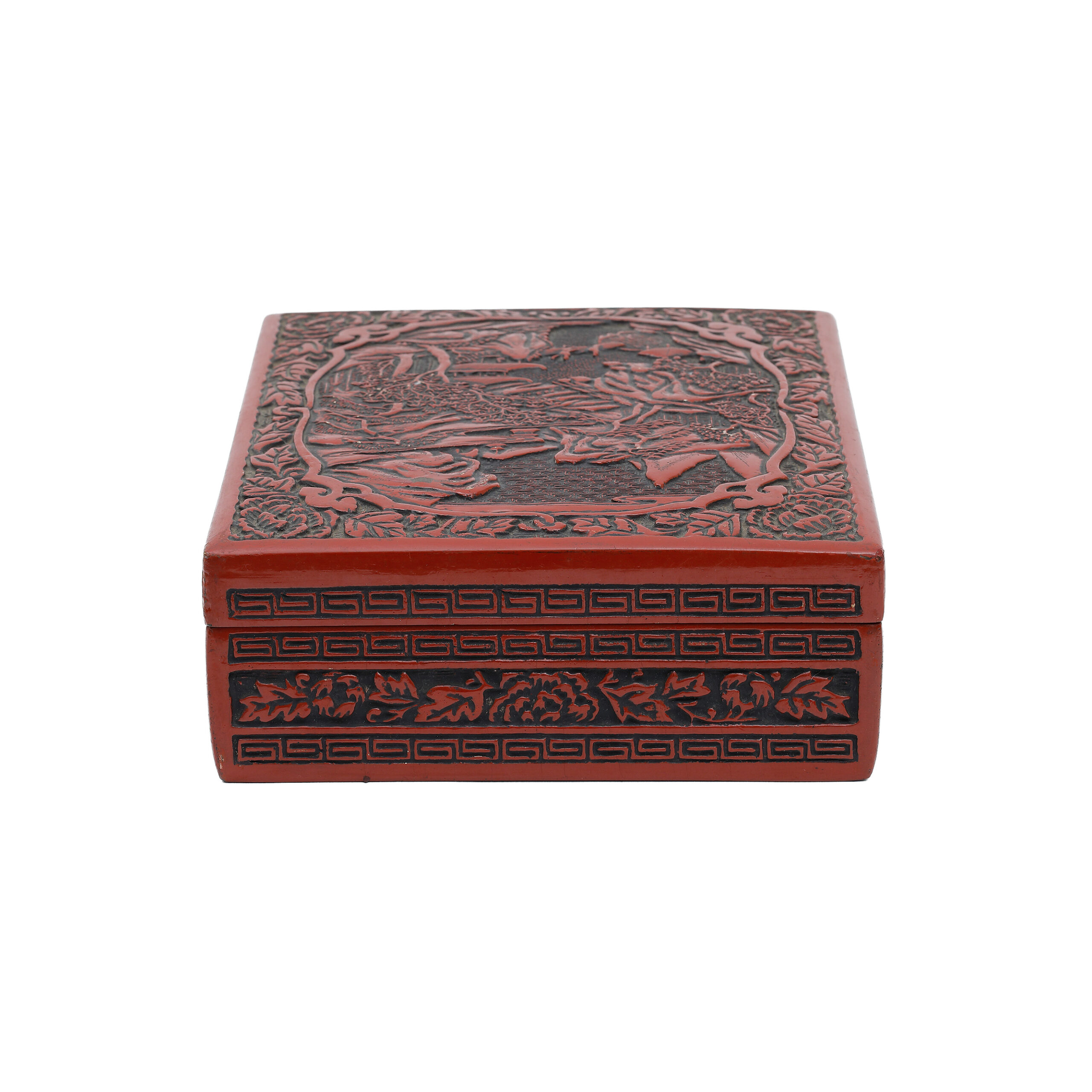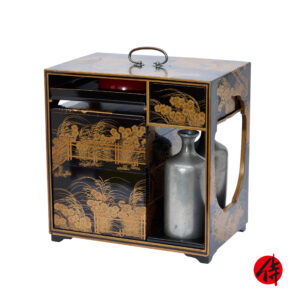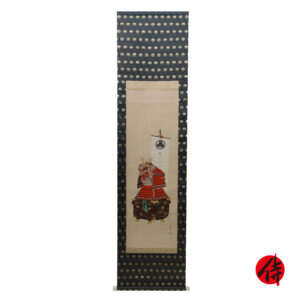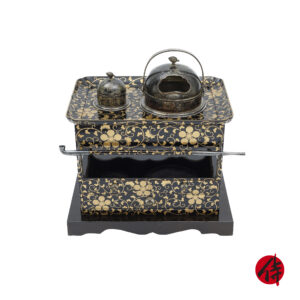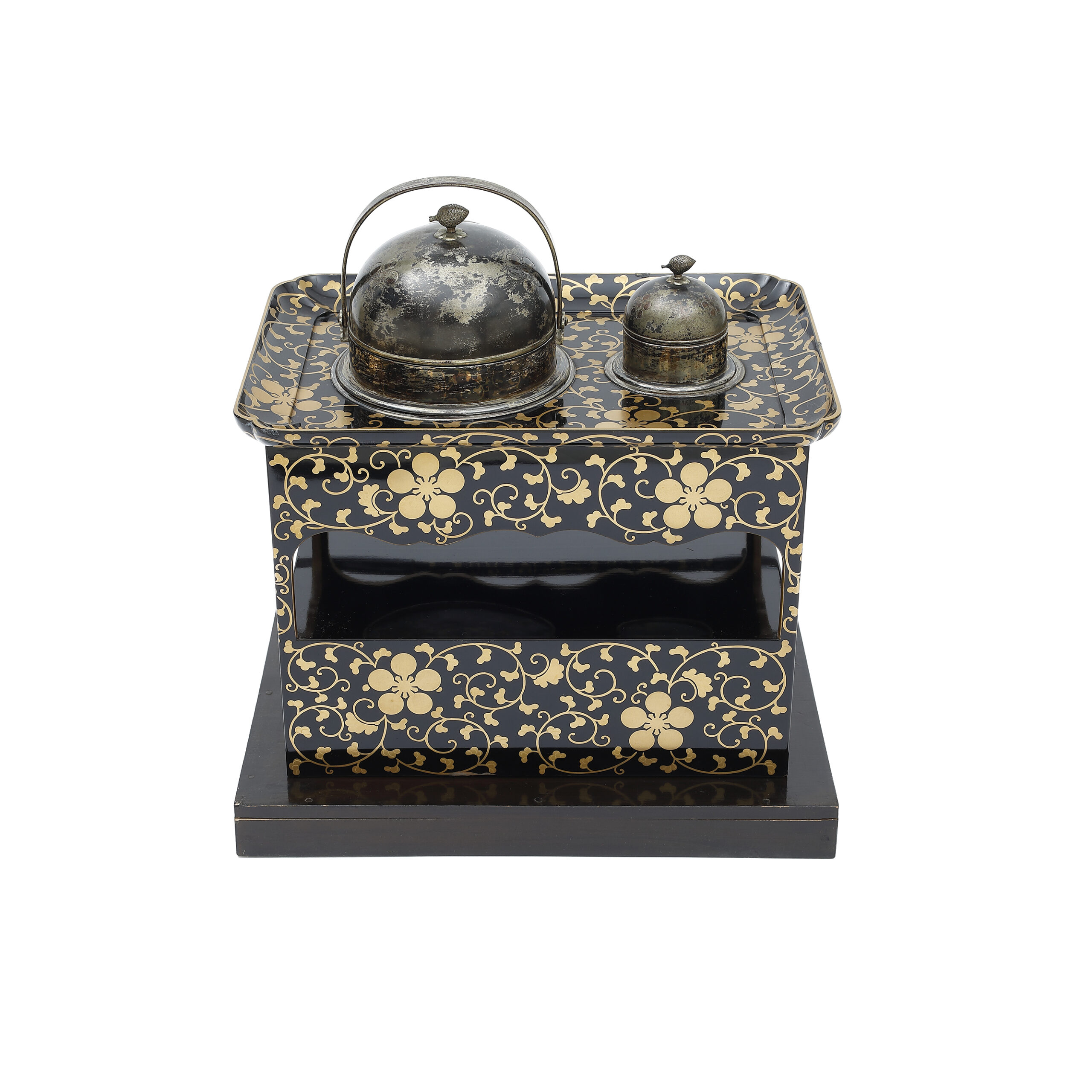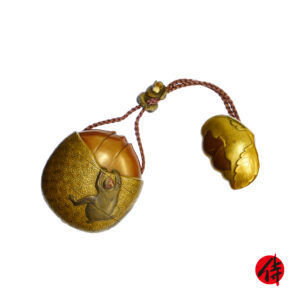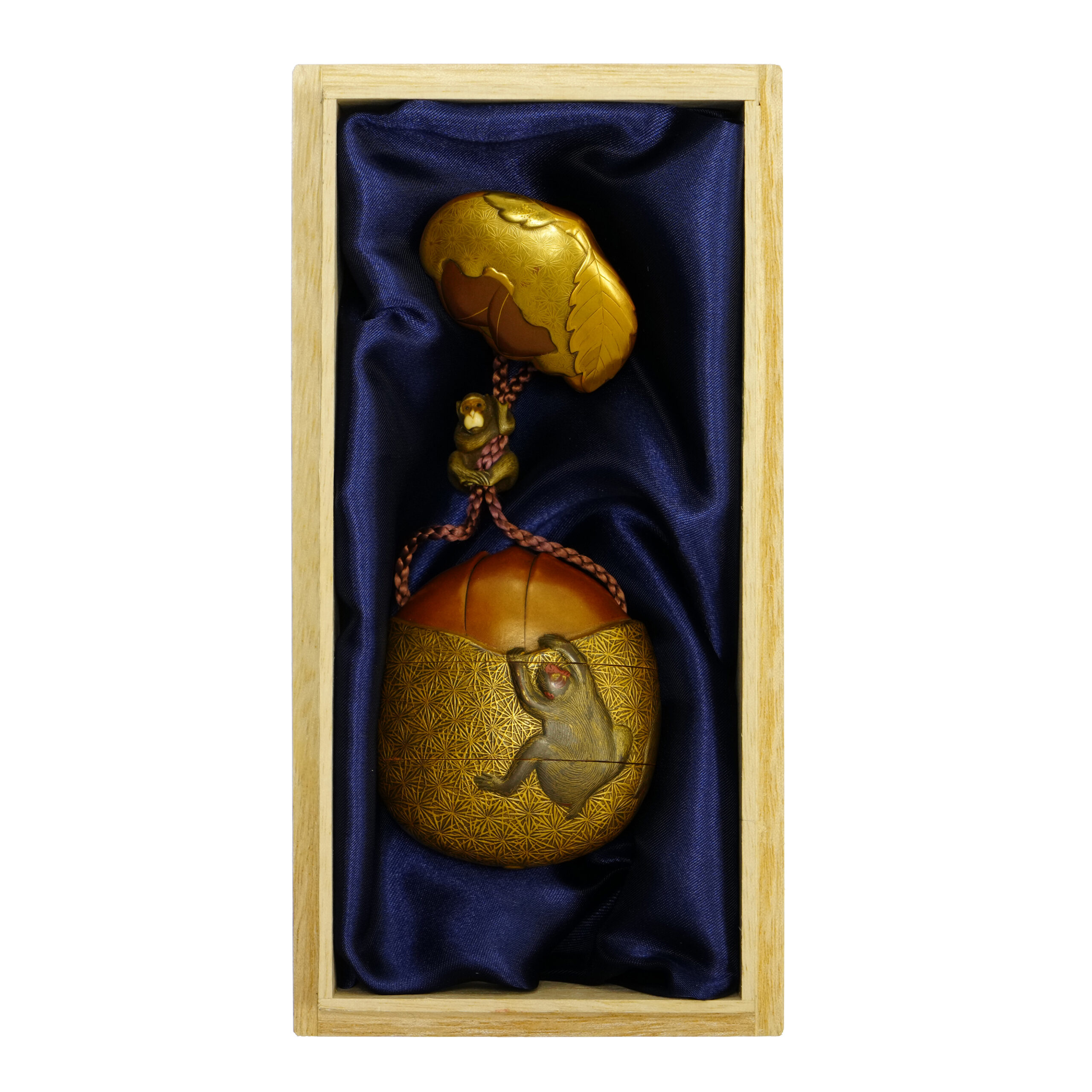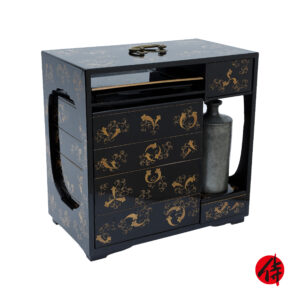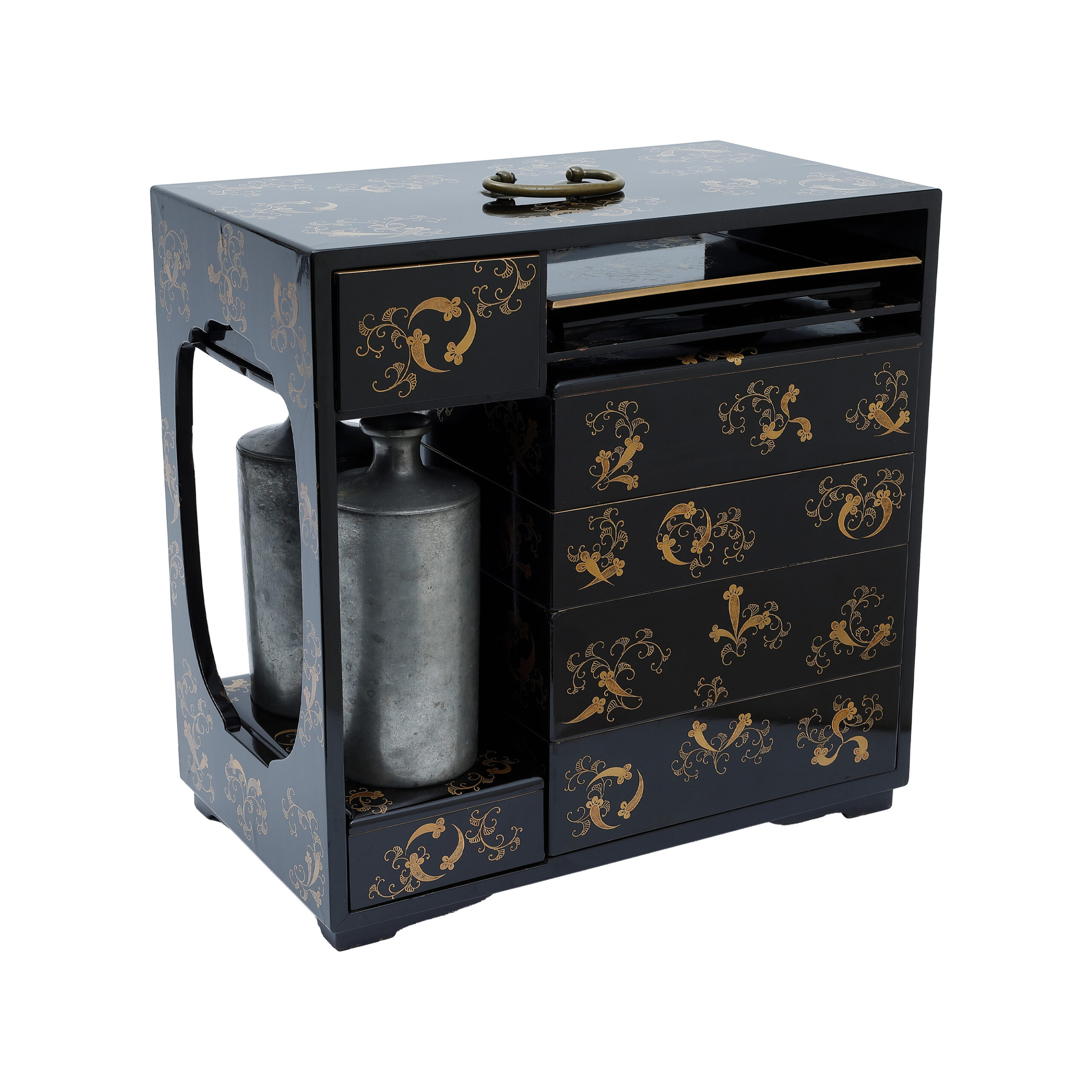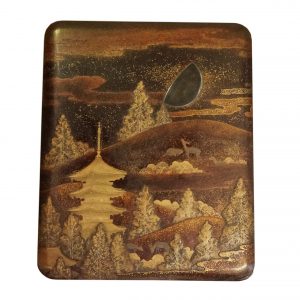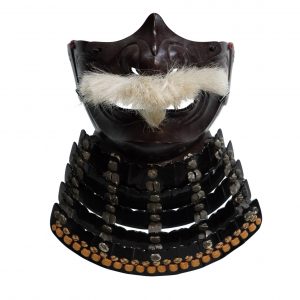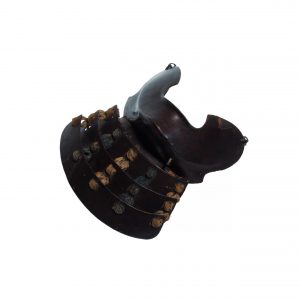Title: Japanese wooden lacquer box-Sansui Zu
Description
A Bunko (文庫) is a type of box, and it is also called the Bunko Bako (文庫箱). It has been used to store books, personal belongings, or valuables. Since ancient times, Japanese people have customarily put essential things in boxes. They also developed various techniques for decorating packages.
This box has a rectangular shape, and its entire surface is decorated with landscape and plant designs. The wood material is basically coated with elegant black lacquer, and these engraved motifs are also finished with red lacquer beautifully, making this box’s decorative look gorgeously.
The primary motif depicted on the lid of this box is the Sanzui Zu (山水図, landscape). The Sansui Zu is a landscape painting that depicts mountains and watersides. The Sansui theme has existed since the Asuka period (592-710) and has been produced; the Chinese landscape painting styles inspired it. However, this theme became particularly popular after it was brought to Japan from the Continent by Sougen (宋元) in the Kamakura period. The natural scenery is elaborately expressed in the Sansui Zu: mountain ranges, towering rocky mountains, flowing down waterfalls, and the gentle curves of the river, for example. Human characters are sometimes described together. Some themes treat a scene from the story, legend, or folklore.
You can also see various kinds of trees in this landscape. One of them is pine trees (松, Matsu). As pine trees keep their green color throughout the years by withstanding severe heat and cold, people thought this plant pattern represents eternal youth. Furthermore, its color is called Tokiwa-Iro (常盤色, evergreen trees’ dark green color with brown), and pine trees have another name “Tokiwa-Gi (常盤木).” Tokiwa means immutability, so Tokiwa-Iro is a color that praises green with a wish for longevity and prosperity. It is said this color was appreciated, especially in the Edo period, as a good-luck color. The pine tree design gives us an elegant and noble impression; it might be another reason that people love this motif.
The flowers arranged as surrounding this landscape seem to be peonies (牡丹, Botan). Peony represents happiness, wealth, nobleness, and gorgeousness. This flower pattern has been treated as a kind of good-omen motif; people regarded it as a rich harvest sign. Peony is called “Botan” in Japanese. When we write this flower’s name in Japanese, its second letter means mountain hermit medicine that would give us eternal youth. Based on the meaning of this letter, the peony pattern symbolizes eternal youth and longevity.
If you look at the sides of the box, the combination of peonies and some geometric pattern that connects straight lines like a spiral is depicted. This continuous geometric pattern is called Raimon (雷紋) or Raimon Tsunagi (雷紋繋ぎ), which means a shape of lightning streaks. This design was brought to Japan from the Continent. People regarded the thunder as a symbol of the wonders of the natural world. It is thought this design has the power that it would protect people from evil spirits. In Japan, this pattern has been used since ancient times, for example, it is seen even in some Yayoi Dokis (弥生土器, Yayoi pottery).
This Bunko would be fit to store letters, documents, and other small items. You could also display it to enjoy as one of the interior decorations in your room.
*As this item is an antique, please check each photo and ensure its condition.



【About us】
Samurai Museum is located in Tokyo, Japan, exhibiting antique artifacts related to the Samurai history. Samurai Museum Shop is the place for those who are interested in Japanese culture and craftsmanship. We deal with antique Samurai swords/armor, traditional crafts made in Japan and so on.
【Payment method】
We accept payment through Stripe (Credit card), PayPal, Apple Pay or ChromePay, all of which are secure payment methods. Also, you don’t need to make an account on Stripe for the checkout. If you prefer other payment method, please contact us. You may either pay in JPY, USD, AUD, CAD, EUR, CHF or GBP. The price is set in Japanese Yen. Prices in other currencies are automatically calculated based on the latest exchange rate.

【Shipping duration】
We normally ship via EMS (Express Mail Service) provided by Japan Post. It usually takes at least 5-14 days to deliver the package after you place an order. Time of delivery is estimated as accurately as possible by the carrier but does not take into account any delays beyond our control such as by inclement weather, post office holiday seasons.
We offer Free International Shipping as long as we can ship your order by EMS. If you prefer other shipping carriers, please contact us.
We will inform you of the order’s tracking number via email. Please make sure you fill out your valid email address correctly.
*If you like to make sure if EMS shipping is available to your country, please contact us.

【How to make sure the condition】
Please keep in mind that what you are going to purchase is an antique item. We uploaded high resolution photos for you to check its condition thoroughly. If you like to see more photos with different angles, please feel free to contact us. We will be happy to send them to you so that you can make informed decision.
It is essential for us to know that you are happy with your choice of antique item and we are prepared to use the best of our ability to serve you.
Would you like see some more antique items for sale? Please check the link below. We hope you can find your favorite item.
https://www.samuraimuseum.jp/shop/product-category/antique/

